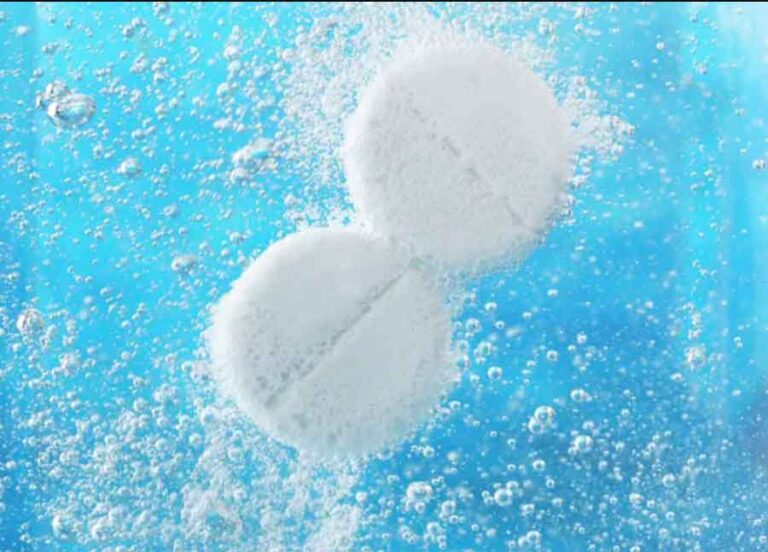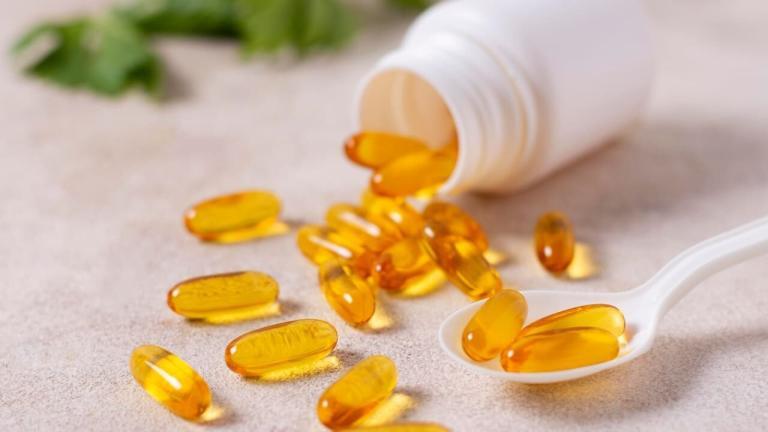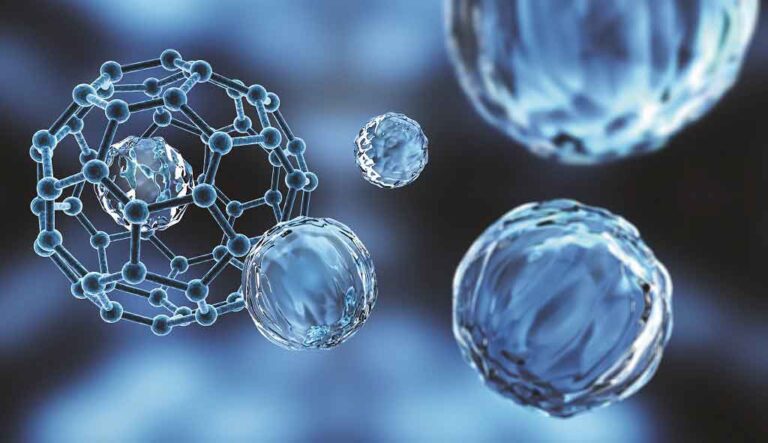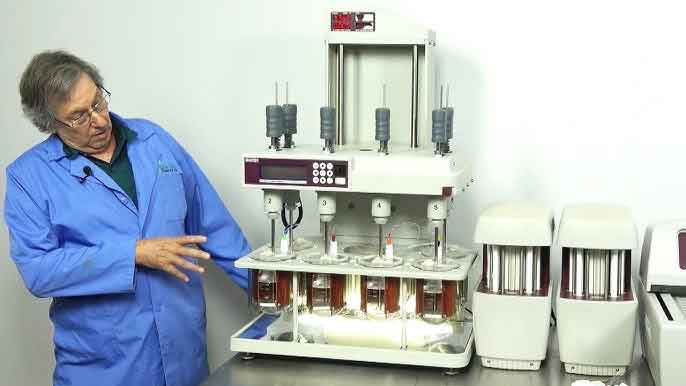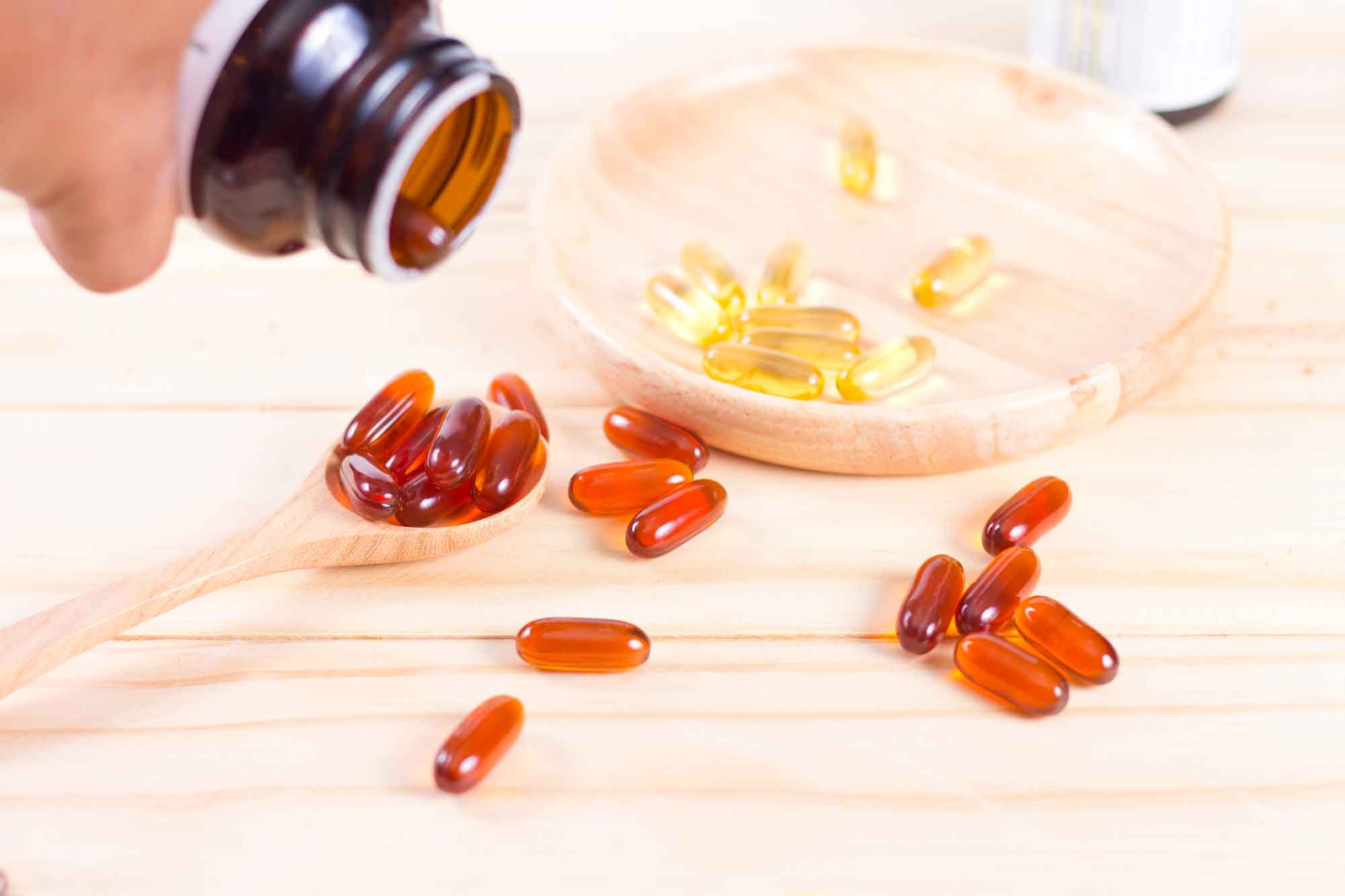
To ensure the physical and chemical stability of Lipid-Based Formulations (LBFs), it is essential to find a delicate balance between the formulation and the delivery shell system. This equilibrium is critical for maintaining the high quality of the product, as any movement of components between the fill content and the outer shell can have a significant impact. LBFs of Type III and IV, which contain hydrophilic elements such as polar solvents, co-solvents, surfactants, co-surfactants, or shorter chain lipids, are particularly prone to these interactions.
While previous research, such as the studies conducted by Cole et al., has primarily focused on examining the physical compatibility of excipients with two-piece gelatin shells, it is crucial to interpret the findings with caution. Many of these studies utilized excipient concentrations of 100% instead of the actual concentrations used in fill formulations. Therefore, it is necessary to evaluate shell compatibility using the specific fill formulation to ensure reliable results. At our advanced facility, we employ a comprehensive shell compatibility testing methodology that assesses the shells’ ability to withstand exposure to diluted excipient concentrations found in the final formulation. This rigorous approach allows us to confidently deliver products that are ready for the market.
The use of hydrophilic solvents like PG, PEG 400, ethanol, and their combinations significantly affects the mechanical properties of Lipid-Filled Hard Capsules (LFHCs) in Lipid-Based Formulations (LBFs). The interaction between the shell and fill content has a substantial impact on the physical stability of the product. When components migrate from the fill content to the shell, it can lead to shell plasticization, resulting in increased stickiness and distorted shapes, especially under higher storage temperatures. On the other hand, if components migrate from the shell to the fill, it can cause brittleness and an increased risk of breakage.
During the development phase, adjusting the excipients and initial shell water content of Soft Gelatin Capsule (SGC) shells can effectively address compatibility issues between the fill and shell. However, this adjustment is not possible with LFHCs, as the capsule shells mainly consist of polymer without additional excipients. Although incompatibility between the fill and LFHC shell is not common, it remains one of the primary reasons why SGCs are preferred over LFHCs.
Additionally, it is worth noting some novel aspects in this field. For instance, the encapsulation of LBFs in alternative shell materials, such as vegetarian or vegan options, has gained significant attention in response to the growing consumer demand for plant-based products. Exploring the compatibility between LBFs and these alternative shell materials opens up new possibilities for formulators, allowing them to cater to a wider range of consumer preferences.
Furthermore, advancements in nanotechnology have paved the way for the development of lipid-based nanocarriers as alternative delivery systems. These nanocarriers offer improved stability, controlled release, and enhanced
targeting capabilities. Investigating the compatibility between lipid-based nanocarriers and various shell materials presents exciting opportunities for delivering LBFs with improved therapeutic efficacy and precise targeting.
The assessment of crosslinking plays a crucial role in evaluating the shell during the pharmaceutical manufacturing process. Gelatin, a commonly used material in capsule shells, exhibits a strong tendency to crosslink under diverse conditions. Crosslinking can negatively impact in-vitro dissolution testing, leading to disastrous dissolution failures. Although in-vivo scintigraphy and pharmacokinetic studies suggest that the clinical effectiveness of crosslinked capsules is highly unlikely, it is essential to minimize the potential for crosslinking.
The United States Pharmacopeia dissolution methods allow the use of enzymes to mitigate crosslinking. However, chemical interactions with gelatin can cause severe crosslinking, even in the presence of enzymes, leading to suboptimal dissolution properties. Consequently, minimizing exposure to excessive heat and oxygen during processing is crucial, as some low-bulk-density excipients can oxidize to form peroxides and aldehydes, which can catalyze crosslinking reactions.
The use of excipients with low levels of impurities that catalyze crosslinking, such as peroxides and aldehydes, is highly recommended. Additionally, choosing suitable gelatin types can significantly minimize crosslinking issues since some types are more prone to crosslinking than others. Gelatin vendors have developed crosslinking-resistant gelatins, providing the formulator with additional and effective options when crosslinking is prevalent.
In cases where significant crosslinking cannot be avoided, the ultimate solution is to use gelatin-free capsules. This approach can be necessary due to the active pharmaceutical ingredient or impurities. In summary, evaluating crosslinking potential, minimizing exposure to heat and oxygen, using suitable gelatin types and excipients, and resorting to gelatin-free capsules if necessary are crucial steps in ensuring the quality of pharmaceutical products.
SOFT GELATIN CAPSULES (SGC)
LIQUID IN BOTTLE (LIB)
The use of Liquid in Bottle (LIB) as a delivery method provides unparalleled flexibility, eliminating the need for a shell and allowing for a wide range of dose sizes. However, addressing the challenge of taste masking is of utmost importance. LIB is commonly employed for pediatric patients or individuals with swallowing difficulties, but its versatility makes it a wise alternative in various situations.
When conducting preliminary toxicity/safety studies on rodents, a widely used and highly efficient technique involves infusing prototype formulations into bottles and administering them via gavage. This approach bypasses the need for
capsule shell development, focusing directly on the active pharmaceutical ingredient (API) and the effectiveness of the formulation. It also offers the advantage of dose flexibility by regulating the volume of the formulation dispensed, which is crucial during this critical phase of clinical studies.
To protect labile APIs from the risks of photo degradation, oxidation, or instability, placing them in amber glass bottles and infusing them with nitrogen is an essential protective measure. This strategic safeguard ensures the integrity and stability of the API during storage and administration. In many cases, manual in-house manufacturing is sufficient for LIB production, providing a practical and cost-effective solution.
Table 3: Advantages of Liquid-Filled Capsules for LBFs
| LBFs are commonly composed of liquid and/or low melting point semi-solid excipients, making liquid-filled capsules (LFCs) a suitable delivery system for them. Below are the reasons why LFCs are preferred for LBFs: |
| 1. Compatibility: LFCs can be used with most excipients employed in LBFs. |
| 2. Patient Acceptance: LFCs are widely accepted by patients and can help mask taste and odor issues that arise from the API and formulation matrix, resulting in better patient compliance. LFCs are available in either gelatin or gelatin-free formats, potentially providing added benefits such as dietary or religious acceptance. |
| 3. Accurate Dosing: LFCs assure accurate dosing of APIs, particularly potent APIs, given the precise volumetric filling of liquid formulations that is obtainable with encapsulation equipment. |
| 4. Safety: LFCs ensure safer handling of APIs during processing and for patients and consumers because the shell provides a barrier against contact exposures with the API. The API is wetted, avoiding dust generation. |
| 5. Improved Stability: LFCs provide improved stability by protecting the API from exposure to oxygen or water. |
| 6. Performance Properties: LFCs have negligible adverse impacts on the performance properties of the encapsulated fill formulation, including their dispersion, digestibility, and release from the dosage form over time. |
| 7. Scalability: LFCs possess minimal scale-up factors, eradicating the issues related to blend uniformity, segregation, and flowability often seen in powder/tablet processing. LFCs allow for small scale batches of a few dozen capsules, resulting in savings of API, time, and money, making LFC a fast and efficient development platform. |
In laboratory settings, only meager amounts of API are utilized owing to its severely limited availability during this pivotal developmental stage. The use of lipid-based formulations (LBFs) may be judicious for administering medication to larger animal species such as dogs, pigs, or primates via gavage or by incorporation into their food, contingent upon the API formulations’ sufficient palatability. As the study advances and the demand for more bottles amplifies, manual filling may prove futile, thereby necessitating the use of semi-automated or automated bottle filling lines to generate supplies.
The number of lipid-based products marketed as oral liquids in bottles is scanty. In a 2017 assessment of previously approved LBFs for oral medication delivery, the preponderance (25 out of 36) of lipid-based products were conveyed utilizing self-emulsifying drug delivery systems (SGCs). A meager 6 out of 36 products employed lipid-based formulations with elevated concentrations of surfactants and co-solvents (LFHC), and a paltry 5 out of 36 were proffered as oral liquids in bottles. Table 3 enunciates the motives why LFCs are typically favored for LBFs as clinical studies progress.
LIQUID-FILLED CAPSULES
Lipid-Filled Capsules (LFCs) represent an exceptionally efficient method for administering unit doses of liquid, semi-solid, and thermosetting formulations. Patients find them easy to use and well-accepted. Due to these advantages and other factors listed in Table 3, LFCs are the primary delivery platform for Lipid-Based Formulations. LFCs can be classified into two broad technologies: LFHCs and SGCs. Each of these can be further divided into various shell types, usually categorized as either animal-based (gelatin) or non-animal-based (such as hydroxypropylmethyl cellulose (HPMC), starch, carrageenan, etc.). The choice of shell system depends on both the Target Product Profile and the physiochemical properties of the formulation. Soft Gelatin Capsules (SGCs) represent a superior type of Liquid-Filled Capsules (LFCs) that showcase an impenetrable shell crafted from remarkably flexible materials. Gelatin remains the most popular choice for composing the shell, although some manufacturers provide non-gelatin shells such as Hycon’s groundbreaking OptiShell® technology, which incorporates polysaccharide materials like starch and/or carrageenan. The plasticizers used to bestow pliability on the shell comprise glycerin, sorbitol, maltitol, mannitol, or other equally effective options. It’s crucial to consider the choice of plasticizer, which must be compatible with the fill formulation. In some instances, plasticizers can react with the fill formulation, causing glycerol esters with weak acid APIs, which can substantially impact the chemical stability of APIs within the drug product. If the stability can’t be attained due to the plasticizer, LFHCs without plasticizers may serve as a fitting alternative.
SGCs offer a diverse selection of shapes and colors, with round, oblong, and oval forms being commonly utilized for oral administration. However, it’s worth noting that the practical limit for the fill volume of an oral SGC is approximately 1.2 ml before it becomes unreasonably large to swallow.
Manufacturers of SGCs maintain a vast library of gel-mass formulas that they can seamlessly apply or slightly modify to accommodate the composition of the fill system to be encapsulated. This library approach capitalizes on the extensive knowledge of shell performance across a broad spectrum of products. Any alterations to the library, such as a change in the gelatin source, undergo rigorous evaluation to ensure that the replacement gelatin performs as immaculately as the original. An organization that has dedicatedly built and meticulously maintains a shell library over an extensive array of LBFs can efficiently ensure a stable and robust shell system. This knowledge base and expertise are unquestionably indicative of an immensely successful SGC operation.
When considering shell polymers, it is crucial to acknowledge the significant divergence in historical utilization between gelatin capsules and non-gelatin alternatives, resulting in the prevailing presence of gelatin-based products in the market. Gelatin shells showcase admirable compatibility with fill formulations encompassing a pH range of 4 to 7.7. However, utmost caution should be exercised to restrict the processing temperatures of gelatin SGCs within an approximate maximum limit of.
40°C, which aligns with the melting point of the gel-mass utilized in the encapsulation process. Appropriate measures ought to be implemented to mitigate the occurrence of crosslinking in gelatin-based SGCs, as discussed previously.
In contrast, polysaccharide-based SGCs harness the inherent properties of starch and/or carrageenan as capsule-forming polymers.
Polysaccharide shells exhibit a notably elevated melting point compared to gelatin, imparting them with the capability to withstand hot fills of up to 75°C. This attribute not only widens the range of acceptable excipients compared to gelatin shells but also facilitates the implementation of customized release strategies by judiciously modulating the dissolution/dispersion kinetics of the fill material using excipients with varying melting points. An exemplary instance of this can be observed in Calcifediol extended-release capsules, an approved product that incorporates a semi-solid lipid formulation into a polysaccharide-based SGC, resulting in extended release properties. Polysaccharide SGCs demonstrate commendable compatibility with alkaline fills up to a pH of 12. Moreover, the adoption of polysaccharide-based softgels eliminates the potential for cross-linking commonly associated with gelatin capsules, thereby significantly expanding the repertoire of fillable materials within the realm of softgel formats.
Regarding shell polymers, gelatin capsules boast a far lengthier and distinguished history than non-gelatin counterparts, resulting in the majority of products on the market being composed of gelatin. Gelatin shells exhibit compatibility with fill
formulations spanning a pH range of 4 to 7.7, yet processing temperatures for gelatin SGCs are restricted to a maximum of approximately 40°C due to the gel-mass’s approximate melting point utilized to formulate the capsule. Gelatin-based SGCs are vulnerable to crosslinking, necessitating precautionary measures to minimize the undesired outcome, as previously discussed. Polysaccharide-based SGCs, on the other hand, rely on starch and/or carrageenan as capsule-forming polymers. Polysaccharide shells surpass gelatin in terms of melting point, which enables them to withstand hotter fills of up to 75°C. This capability to endure higher filling temperatures magnifies the variety of excipients that can be implemented relative to gelatin shells, while also enabling modified release applications via the control of the fill material’s rate of dissolution/dispersion through diverse melting point excipients. For example, Calcifediol extended-release capsules are an approved product that incorporates a semi-solid lipid formulation into a polysaccharide-based SGC with extended release properties. Polysaccharide SGCs exhibit compatibility with alkaline fills of up to pH 12, and polysaccharide-based softgels eliminate the potential for cross-linking associated with gelatin capsules, thereby further widening the range of materials suitable for filling into a softgel format.
The accessibility of rotary die encapsulation, the prominent manufacturing process utilized for filling and sealing SGCs, has made significant progress in facilitating both developmental and commercial production endeavors. However, the efficient operation of a large-scale SGC facility requires
substantial infrastructure, making it impractical for companies with a limited range of SGC offerings. As a result, specialized capabilities for SGC provision are primarily found within select Contract Development and Manufacturing Organizations (CDMOs). An exemplary case of extended-release capsule formulation involves the skillful integration of a semi-solid lipid composition into a polysaccharide-based SGC matrix, allowing precise control over the gradual release profile of the enclosed active ingredient over an extended duration. Furthermore, a comprehensive understanding of rotary die technology and the extensive gel-mass library plays a crucial role in ensuring the successful execution and widespread adoption of this manufacturing approach.
The rotary die process is widely recognized as a highly efficient and continuous manufacturing method employed for the production of both gelatin and non-gelatin Soft Gelatin Capsules (SGCs). This process involves the simultaneous filling and sealing of two ribbons of molten gel-mass into capsule shells using specialized encapsulation machines. During this stage, the capsule shells possess a high water content, which exposes the fill formulation to elevated water activities for a temporary period. This exposure poses a potential risk of water and plasticizer migration from the shell to the fill, especially when dealing with fills that contain polar components. To address concerns related to product stability within the expected water activity profile during encapsulation, alternative technologies such as Low-Frequency High-Containment (LFHC) can be considered.
Following the encapsulation step, the SGCs undergo a drying process, resulting in a water activity range of 0.25 to 0.45 aw, which is below the threshold conducive to microbial growth. This low water activity eliminates the need for preservatives in the shell. However, it should be noted that the final water activity or level of the SGCs will be
influenced by the relative humidity (RH) conditions under which the product is stored. In certain cases, the use of low water vapor barrier packaging may be necessary to prevent water gain or loss due to ambient humidity, ensuring the long-term stability of the product.
The rotary die process offers significant advantages due to its continuous nature, enabling the production of various batch sizes, ranging from small quantities to large batches with extended run times. The solution nature of the fill material and the library concept for the shell system, combined with the continuous nature of the rotary die process, result in minimal scale-up factors. This aspect facilitates a product development approach that focuses on minimizing risks primarily during the early stages. Once a formulation has been established, changes in equipment, batch size, or raw material sources have minimal impact on the critical quality attributes of the final product. This flexibility allows for a seamless transition from small-scale to large-scale production, resulting in savings in terms of Active Pharmaceutical Ingredients (API), time, and costs, making SGCs an efficient and cost-effective development platform.
Another notable advantage of the rotary die process is its closed unit operation for fill material preparation and encapsulation. This closed processing ensures that the fill material remains shielded from atmospheric oxygen throughout the process. The excellent oxygen barrier properties of both gelatin and non-gelatin shells further enhance this protection, making SGCs particularly suitable for the production of oxygen-sensitive products. This closed and protected environment preserves the integrity and stability of the encapsulated formulation, safeguarding it against oxidation.
For a comprehensive comparison of the properties between gelatin-based and gelatin-free (starch/carrageenan) soft capsules, please refer to Table 4. This table provides a summary of the key characteristics and attributes associated with these different capsule types, aiding in the selection of the most suitable option based on specific formulation requirements


